Lim Kit Siang and the secret evangelist agenda

THE THIRD FORCE
The following is a three-part miniseries dedicated to drawing parallels between the recently established DAP-PPBM alliance and the one Semangat 46 established with the DAP back in the 1990’s. In this part, we will learn of the DAP’s evangelist agenda, the central thrust to which was (and still is) a mission to Christianize the entire East Coast of Malaysia.
In part 2, we will see how that agenda played out during the 1990 general election and how it cost Razaleigh his hopes of becoming the next Prime Minister of Malaysia. More importantly, we will discover the real reason Mahathir finds it absolutely necessary that the name Pakatan Harapan be changed to Barisan Rakyat, and why his blue-eyed boy, Azmin Ali, is determined to lure PAS into the opposition alliance.
This miniseries serves to compliment an existing series (links provided below) dedicated to tracing the trail of corruption left behind by the Mahathir regime. As the series progresses, Malaysians will discover for the first time ever what truly transpired during the days leading up to the eruption of the Manminco tin controversy, and how it all ties to the BMF scandal, the mother of all scandals to have hit Southeast Asia.
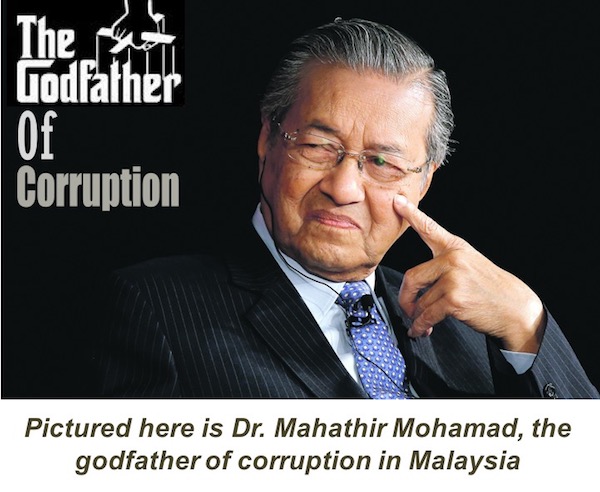
On the 24th of September 1989, the DAP organized a public forum (henceforth referred to as the September forum) with the stated intent of discussing a ‘post-NEP’ era. Held at the Federal Hotel in Kuala Lumpur, the event came on the heels of a five-day visit to Sarawak by the party’s then secretary general, Lim Kit Siang.
According to the senior Lim, he was in the East Malaysian state to assess the level of abuse suffered by the indigenous tribes there. He went on to state that the visit helped him derive an impression of how the political elite accumulated “indecent amounts of colossal wealth,” implying that the wealth had undoubtedly caused the less privileged to shed tears by the bucket loads.
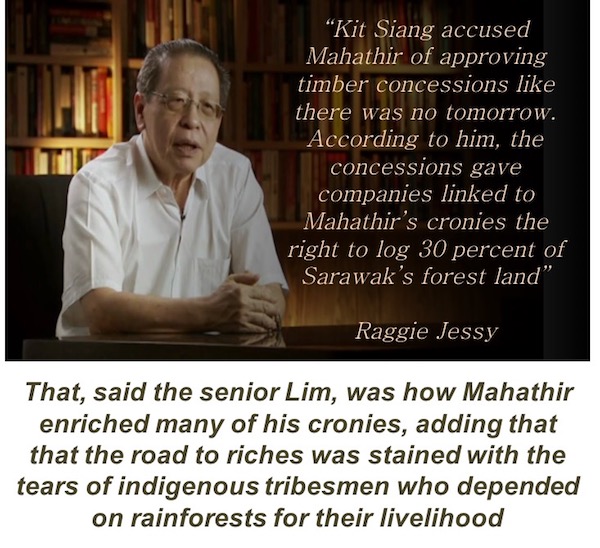
These exposes and others like them were well received by the Chinese. They began to look upon Kit Siang as a beacon of hope and a hero whose equal was never known. To the average Chinaman, a man brave enough to accuse Mahathir of cronyism had to be worth his salt. “Such a man is not capable of telling lies,” said one DAP rep who attended a dinner hosted by the senior Lim prior to the 1990 general election.
But little did the DAP rep know of the senior Lim’s propensity to hide truths. And, as some of you may already know, a truth of omission is usually an outright lie. Such was the case with the senior Lim, who told the September forum that he was in Sarawak to meet the leaders of indigenous tribes. What he did not tell the forum was the meeting he had with a group of evangelist Christians on the second day of his five-day visit.
The meeting, held to discuss matters of religion the senior Lim found most disturbing, conceded that the spate of conversions from Christianity to Islam in Sarawak had reached levels that were alarming. By keeping the meeting secret, the senior Lim had clearly misled everyone who attended the September forum. It turned out that his trip to Sarawak was less a fact-finding mission and more a prejudice-confirming exercise. Or, let’s just say, Kit Siang was on a religious crusade, possibly on behalf of his party, the DAP.
There were a hundred and one reasons why the senior Lim needed to keep the meeting secret. For one, he did not want the Mahathir regime to accuse him of evoking Islamophobia. At the time, certain leaders from within Mahathir’s circle had come to know of collusions between the evangelists and the DAP. Kit Siang feared that these leaders would connect the dots and discover a mission by the DAP, purportedly to Christianize as many of the Orang Asli (Aslis) in Sarawak as possible.
For this reason alone, the meeting was made known only to persons occupying the highest of rungs within the party’s central dictatorship. Not even the branch or division leader knew of collusions that existed between the DAP and the evangelists. Rather than letting these leaders in on the truth, the senior Lim spent his time telling them how the Mahathir regime was busy indoctrinating the Aslis with Islamic values and beliefs.
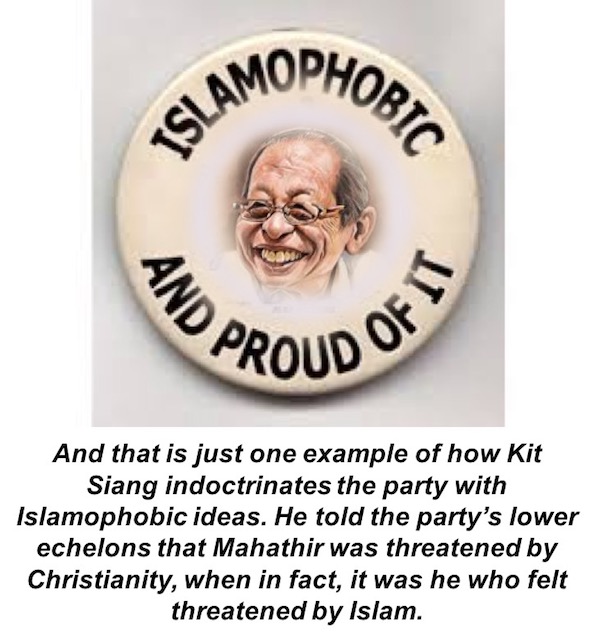
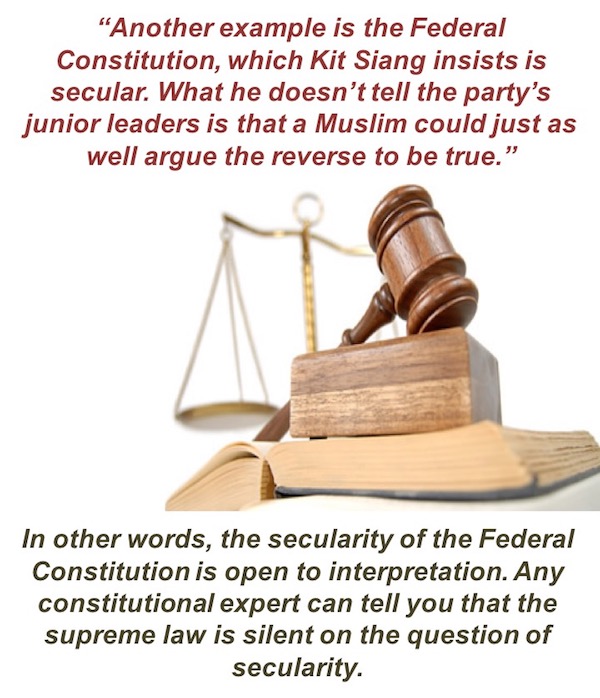
But Kit Siang doesn’t want the junior leaders to know that. As a matter of fact, he doesn’t want them to know a great many things. The lesser they know stuff, the easier it is for him to fool them into believing anything. And that is precisely how he keeps the party’s lower echelons glued to his Islamophobic nonsense.
It was made easier for him in 1989 when the juniors came to know of Mahathir’s collusions with certain Islamic missioners to spread the word of Allah among the Aslis. Kit Siang frightened the juniors by telling them that the Mahathir–Asli saga was just the beginning, that the Chinese would one day be subject to the Islamic Syaria and lose their right to practice their religion freely.
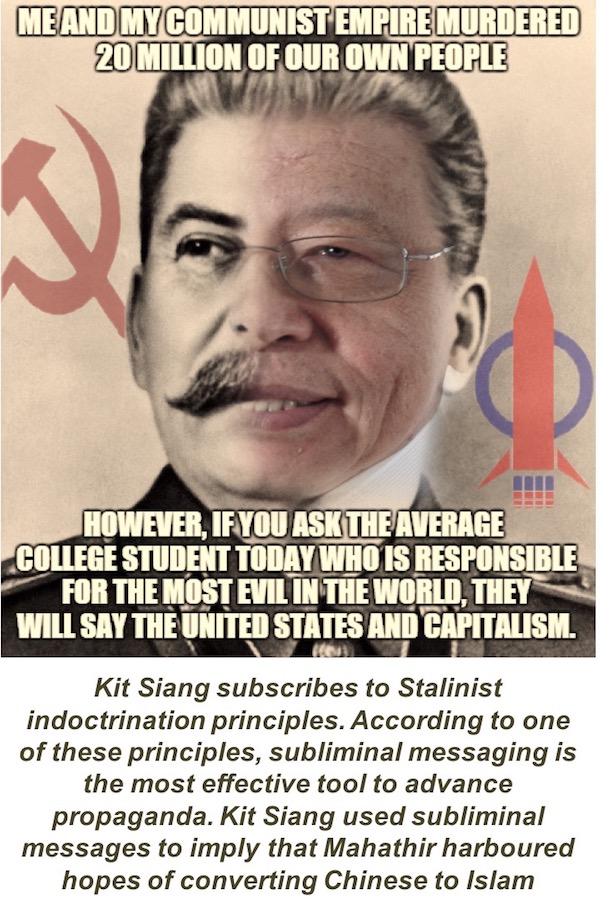
But little did the juniors know that it was Kit Siang’s own men who were behind the Sarawak-evangelist mission. The higher the number of evangelists who turned up at the doorsteps of the Aslis, the more Mahathir would send Islamic preachers to do the bidding of Allah. The whole affair turned into some egotistical nonsense that had absolutely nothing to do with the word of God. It was all about two Machiavellian politicians who were working hard to outdo one another.
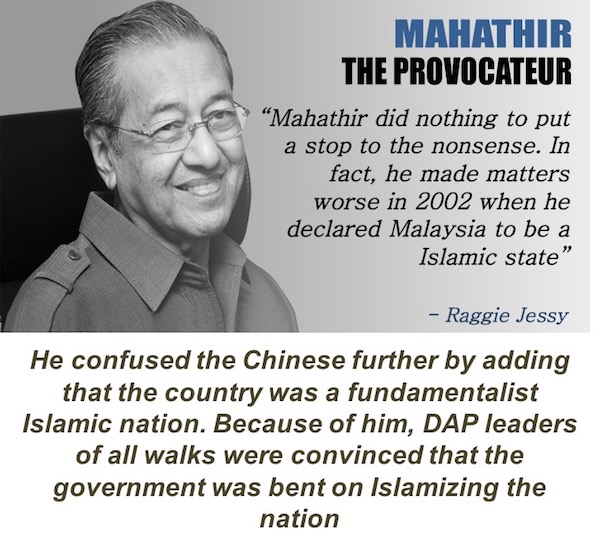
The Sarawak agenda
As far as electoral strategies go, Christianizing the Aslis of Sarawak seemed most expedient for the longer term. The senior Lim’s goal had always been to deny the ruling Barisan Nasional (BN) a two-thirds majority in parliament. Given that Sarawak was the ruling coalition’s fixed deposit in terms of voter base, teaching the Aslis ways of the Lord and the importance of voting against the anti-Christ was probably good idea.
But the evangelists weren’t the only groups topping Kit Siang’s list of priorities. During the senior Lim’s earlier visits to Sarawak, he would call upon leaders of indigenous tribes to hear their grouses on a variety of issues. His targets were the Iban, Dayak, Kayan, Penan and Kelabit communities, groups that contributed significantly to the demographic make-up of the East Malaysian state. The senior Lim wanted them to know that he was a friend they could count on.
To impress upon the tribesmen that he cared, the senior Lim would spend time telling them stories of how he “struggled to unite the races.” Just for that, he would sit on rocks with a pen and a piece of paper, listening diligently to concerns raised by their leaders. He realized that it didn’t take much to please these folks – merely listening to their grouses went a long way towards giving them hope for the future.
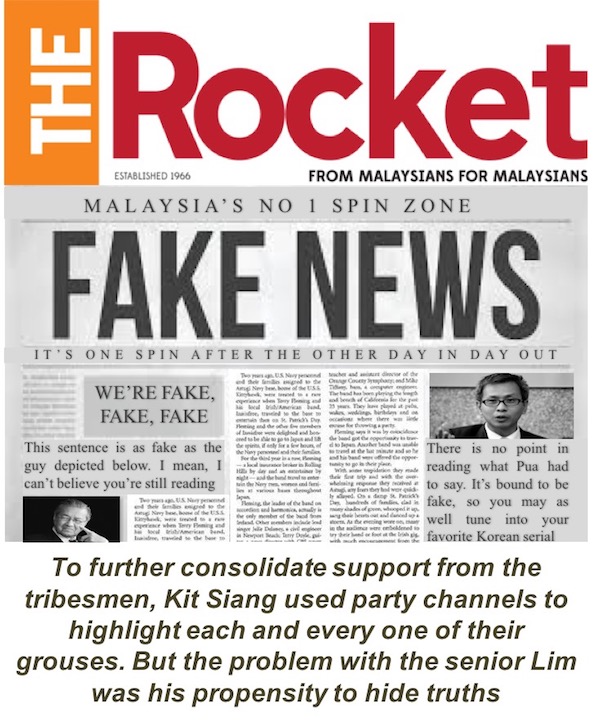
For instance, we learned from the senior Lim that between 1981 and 1987, many concessionaires linked to Mahathir’s cronies had increased the rate of logging in Sarawak to encompass a whopping 700,000 – 800,000 acres of rainforest a year. I’m told that the concessionaires even encroached forest reserves without the authorities so much as batting an eyelid.
Now, all of that is the truth. As a matter of fact, timber operations in the Baram and Marudi areas alone were carried out in three shifts, 24-hours a day. These gruelling schedules destroyed entire sections of Sarawak’s rainforests virtually overnight. It almost looked as if a large bulldozer had come in the darkness of night to eat into the life of the Ibans and Penans.
But it is what the senior Lim refused to report that many of you will find intriguing. Between June and September 1989, several DAP leaders were said to have instigated the Ibans and Penans into come out in the droves. The plan. I am told, was to irritate Mahathir to a point that the Prime Minister would spit his draconian venom. Needless to say, the plan worked like a charm.
The number of protesters who turned up were so large, they severely disrupted the movement of timber along logging roads. The disruption cost Mahathir’s cronies hundreds of thousands in daily losses and threatened to bankrupt the smaller concessionaires. The Prime Minister was left with little choice but to place hundreds of protesters under lock and key. The arrests presented Kit Siang a golden opportunity to front page the “atrocities committed by the Mahathir regime.”
During his September 1989 trip to Sarawak, the senior Lim made a public call for the Prime Minister to put an immediate stop to the mass arrests. According to him, the Iban and Penan tribes were forced into protests as the destruction of rainforests affected their livelihoods. No mention was ever made of the DAP’s role in flaming the protests. Instead, we were told how the political elite were too busy amassing “indecent amounts of colossal wealth” to bother about “the poor and defenseless.”
But none of what the senior Lim said bothered Mahathir. As far as the Prime Minister was concerned, the areas being logged were not forest reserves (which was a lie) and did not warrant protests from anyone. In Mahathir’s books, it was always about his cronies and what served their interests best. As for everyone else, they could just go to hell.
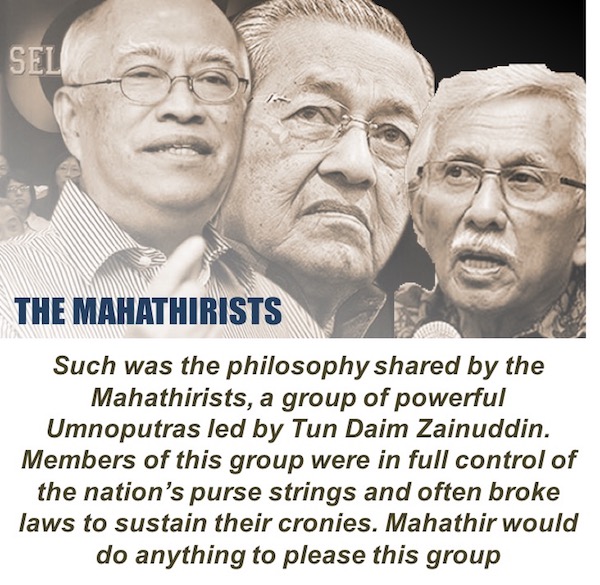
Kit Siang had long known of the Mahathirist philosophy. He knew that his public calls for the Prime Minister to release the Ibans and Penans would only serve to embolden them further. So he made sure that the DAP continued to ‘defend’ the rights of the Iban and Penan communities to protect ‘their’ rainforests. The more the Ibans and Penans protested, the more resolute the Mahathirists were with draconian measures to protect the interests of their cronies.
These draconian acts helped the senior Lim convince Malaysians that the Mahathir regime was evil. According to him, the federal administration under Mahathir was so conceited, it had concentrated power in the office of Prime Minister to permit “the legislation of laws that were repressive.” He implored the DAP to work towards reducing the federal’s two thirds majority in parliament to curb the Mahathirist threat.
The Razaleigh factor
Lim Kit Siang is an advocate of Stalinist communism. This was confided to be by several DAP insiders over the span of ten years and by people I planted in the DAP back in 2010. The Stalinist approach is always to blame your enemy for your own misdeeds. The goal is always to leave a trail of destruction and to ascribe blame to your enemy for that destruction.
The speech delivered by Kit Siang at the September forum had Stalinism written all over it. The minute the senior Lim grabbed the mike, he was all over Mahathir, implying that the Prime Minister was a democratically elected dictator who corrupted government through “the concentration of power in the hands of the Executive and in particular, the office of Prime Minister.”
Now, tell me, how strange can it be that the man who spoke those words is the very same man who, to this day, makes damn sure that power in the DAP is concentrated in his hands and that of his son? But that’s what Stalinism is all about. It is an ideology that subscribes to principles of centralization, totalitarianism and the pursuit of communism.
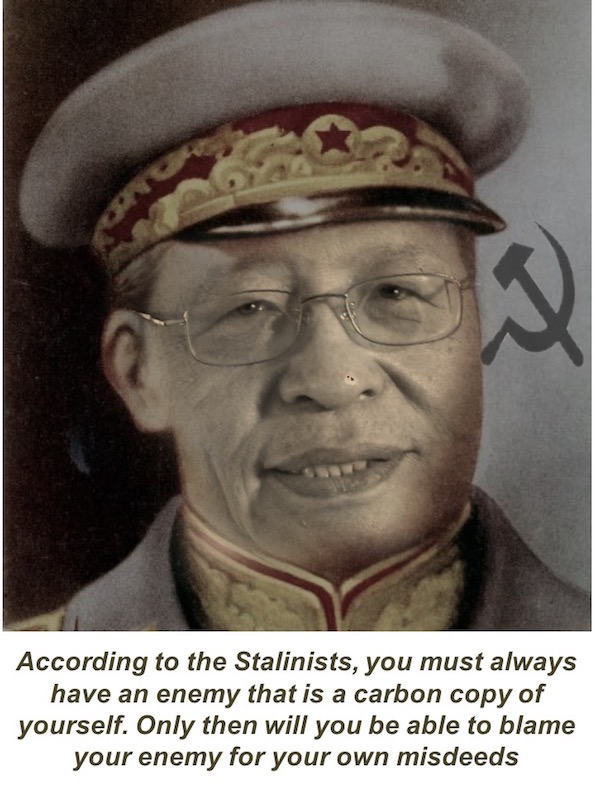
A Stalinist would always resort to strategic partnerships to defeat the common enemy. Never mind the differences in ideologies – that can be ironed out later. What is more important to the Stalinist is the weakening of the enemy’s ideological base. The weaker the enemy’s ideological base, the less likely people will notice the ideological differences that exist within partnerships you may have committed to.
And that became the basis to Kit Siang’s pre-electoral strategy. The minute Tengku Razaleigh Hamzah established Semangat 46 (Semangat) – a moderate-left UMNO breakaway that purported to advocate social justice – the senior Lim saw an opportunity. He realized that the Razaleigh factor was all he needed to convince the Malays and Chinese that a Semangat-DAP coalition would serve Malaysians far better that the UMNO-MCA alliance ever could.
As far as Kit Siang was concerned, the ideological differences that existed between Semangat and the DAP was not an issue. He would simply shift the spotlight towards the Mahathir regime by forcing MCA to explain the Bumiputra concept. He would tell the Chinese that the Mahathir regime was ideologically inconsistent as it claimed to represent the Malaysian race but still recognized the distinction between Bumiputras and non-Bumiputras.
Once done confusing the Chinese, the senior Lim had planned to ask Mahathir if Malaysia was indeed an Islamic state. He would remind the Chinese that even the then deputy premier, Tun (then Dato’) Musa Hitam, had made note of how polarized the nation was. He wanted to frighten the Chinese by telling them that it was not impossible the Mahathir regime would one day impose Syaria laws upon the non-Malays.
These ideas laid the cornerstone to discussions that took place between Kit Siang and Razaleigh on the 6th of June 1989. The meeting, held just three days following the incorporation of Semangat, emphasized the need for strategic alliances between disparate opposition parties to destroy Mahathir’s UMNO (UMNO Baru). The only thing Razaleigh had on his mind then was to become the Prime Minister of Malaysia. As for Kit Siang, he had his sights set on the finance portfolio.
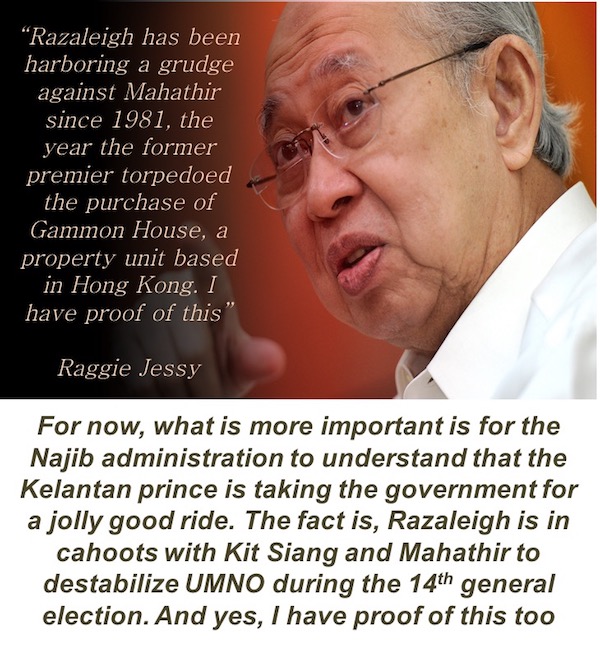
Anyway, that description is apt for the Razaleigh of today. Back in 1989, he was a very different man – he would swear heaven and earth that Mahathir was the sworn enemy. But that’s only because the 1990 general election was drawing near. The Kelantan prince was confident that Semangat had the capacity to destabilize Mahathir’s UMNO.
So confident was he, he was even willing to part with thousands of ringgit to have soothsayers (Hindu Samis, Malay bomohs and what have you) come to his house and tell him that he was destined to be the next Prime Minister of Malaysia. Equipped with such guarantees from the netherworld, he went on to urge Kit Siang to set aside his differences with PAS until such a time that the opposition seized control of government.
Though agreeing in principle, the senior Lim was skeptical that a PAS-DAP alliance would ever last. He knew that the Islamic party was hot on the trail of the DAP’s evangelist agenda and would never abandon its Syaria principles.
To be continued…
PAST ARTICLES IN THIS SERIES:
Part 1: http://www.malaysia-today.net/the-billions-from-bank-bumiputra-that-may-have-ended-with-the-dap/
Part 3: http://www.malaysia-today.net/the-rise-of-mahathirism-the-cancer-that-plagues-the-nation/

